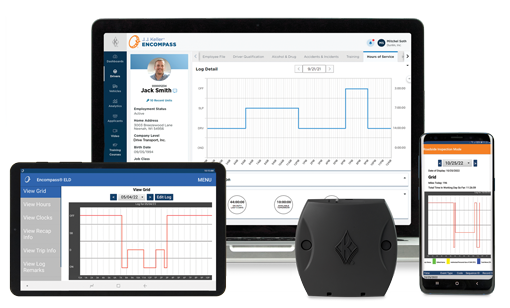Sr. Transportation Safety Editor — J. J. Keller & Associates, Inc.
Assessing the New Hours of Service Impact
The hours-of-service rules are changing, and carriers could find these changes increase driver productivity.
Published On: 05/27/2020


Written by:
Daren Hansen
The hours-of-service rules are changing, and most interstate carriers will find these changes have the potential to increase driver productivity. The FMCSA is amending four significant provisions in the current HOS rules:
- §395.3(a)(3) - 30-minute break
- §395.1(e)(1) - 100 air-mile exception
- §395.1(g)(1) - Sleeper-berth options
- §395.1(b)(1) - Adverse conditions
The FMCSA first proposed these changes to the hours-of-service rules in 2018. The final changes were adopted after the agency reviewed more than 8,000 public comments. The new rules apply to all interstate CMV drivers, and states have three years to adopt equivalent rules for in-state drivers.
What is the New Hours of Service 30-Minute Break Rule?
The new hours-of-service rule requires interstate CMV drivers to take a 30-minute break from driving after having driven for eight hours (under current rules, a break is required after eight consecutive hours on duty). Additionally, drivers may now remain on duty (not driving) during their breaks, whereas current rules say the break must be off duty.
What is the New Hours of Service 100 Air-Mile Exception Rule?
The new hours-of-service rule allows 14 consecutive hours for work rather than 12 consecutive hours. It also allows drivers to operate within a 150 air-mile radius versus the current 100 air-mile limit.
What is the New Hours of Service Split-Sleeper Berth Rule?
For interstate CMV drivers who wish to “split” their mandatory 10-hour break into two separate breaks using a sleeper berth, the new hours-of-service rule requires drivers to spend at least seven consecutive hours in the berth and another break to reach 10 hours. Current hours-of-service rules require at least eight consecutive hours in the berth.
Additionally, neither rest break will count against the 14-hour limit (under current rules, the shorter break counts against the limit). Finally, before or after spending at least 7 hours in a sleeper berth, a team driver may ride in the passenger seat to complete a 10-consecutive-hour break (current rules allow only 2 hours in the passenger seat).
What is the New Hours of Service Adverse Conditions Rule?
The new hours-of-service rule allows interstate CMV drivers to extend both the driving and on-duty limits by 2 hours when eligible for the exception (i.e., 13 hours driving in a 16-hour window for truck drivers, or 12 hours driving in a 17-hour on-duty period for bus drivers). The current rules allow drivers to extend the driving limit by 2 hours but not the on-duty limit (e.g., 13 hours driving in a 14-hour window).
How Will the New Hours of Service Rule Impact My Operation?
The new hours-of-service rules provide benefits for fleets, including more time to drive and more miles for ELD exempt driving. More specific impacts are listed below by each hours-of-service.
NEW HOURS OF SERVICE RULE | NEW HOURS OF SERVICE RULE IMPACTS |
|---|---|
| 30-minute breaks truck |
|
| 100 air-mile exception truck & bus |
|
| Split-sleeper provision truck |
|
| Adverse conditions truck & bus |
|
The new rule will be effective at the end of September, 120 days after publication in the Federal Register, which is expected June 1st.
For more information about the new hours of service rules, check out these free resources:
- Compliance Brief - 2020 Hours of Service - Rules and Impacts
- Whitepaper - The New 2020 Hours of Service Rule: More Flexibility & Productivity
- Whitepaper - Maximizing Driver On-Duty Time
Manage Hours of Service Compliance with Encompass
Use the J. J. Keller® Encompass® Fleet Management Platform to simplify hours-of-service compliance. It tracks your drivers' hours of service for every log type – electronic, paper, exempt, and timecards – always according to DOT regulations. Free quote.
You may also enjoy the following articles:
Sign up for our newsletter!
We'll help you stay on top of regulations, best practices, and fleet industry news. Sign up to receive a monthly email notification with links to our most recent blog articles, free resources, and event invites.
